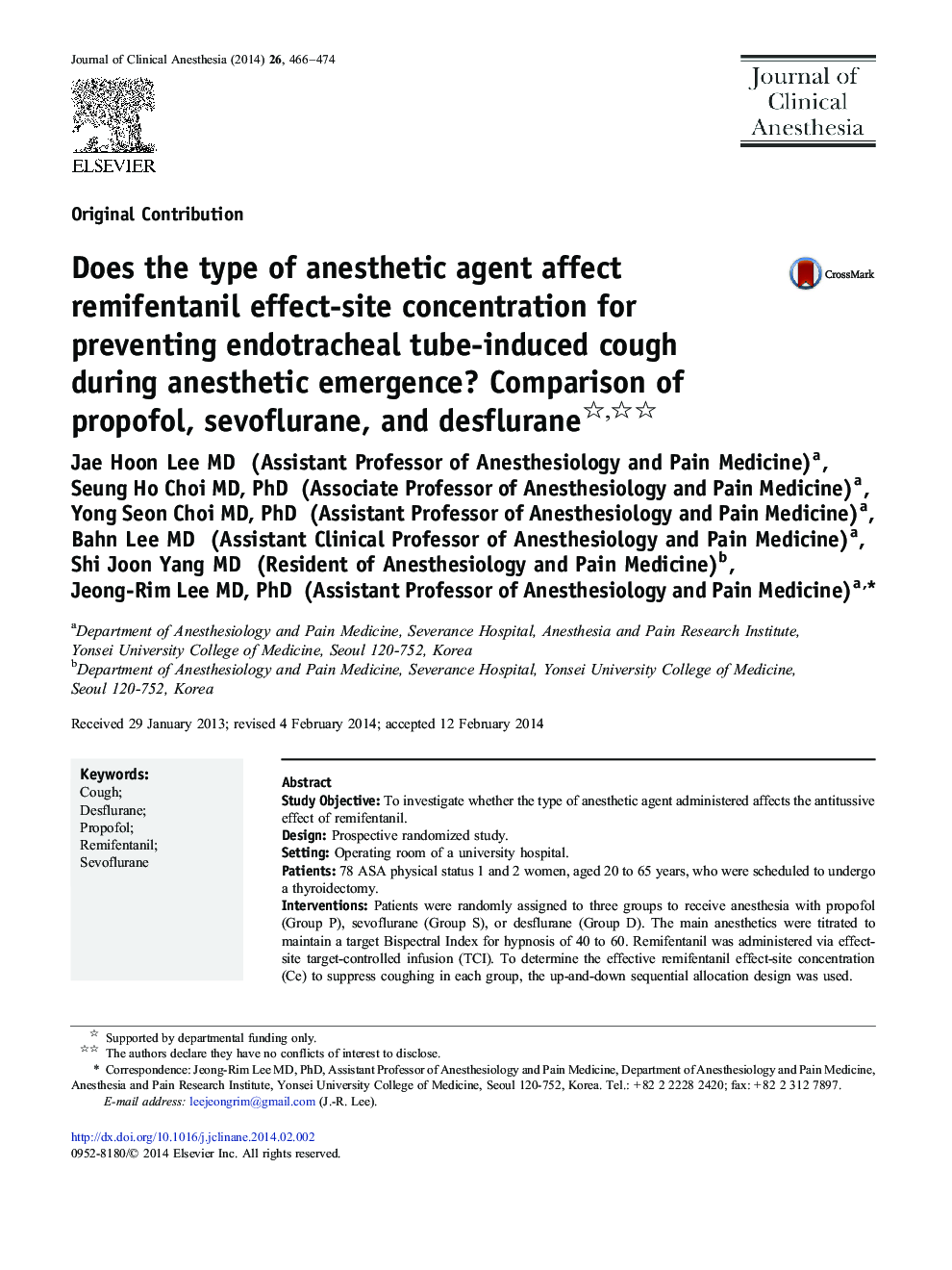| Article ID | Journal | Published Year | Pages | File Type |
|---|---|---|---|---|
| 2762301 | Journal of Clinical Anesthesia | 2014 | 9 Pages |
Study ObjectiveTo investigate whether the type of anesthetic agent administered affects the antitussive effect of remifentanil.DesignProspective randomized study.SettingOperating room of a university hospital.Patients78 ASA physical status 1 and 2 women, aged 20 to 65 years, who were scheduled to undergo a thyroidectomy.InterventionsPatients were randomly assigned to three groups to receive anesthesia with propofol (Group P), sevoflurane (Group S), or desflurane (Group D). The main anesthetics were titrated to maintain a target Bispectral Index for hypnosis of 40 to 60. Remifentanil was administered via effect-site target-controlled infusion (TCI). To determine the effective remifentanil effect-site concentration (Ce) to suppress coughing in each group, the up-and-down sequential allocation design was used.MeasurementsThe half maximal effective concentration (EC50) values of remifentanil for preventing coughing in the groups were estimated using isotonic regression and compared among the groups.Main ResultsThe EC50 of remifentanil for cough suppression in Group P [1.60 ng/mL (98.3% CI, 0.92 - 1.75 ng/mL)] was statistically lower than in Group D [1.96 ng/mL (98.3% CI, 1.81 - 2.50 ng/mL)]. The EC50 in Group S was 1.75 ng/mL (98.3% CI, 1.39 - 2.13 ng/mL), which was higher than in Group P and lower than in Group D, but did not differ significantly from either group.ConclusionsRemifentanil administration for cough suppression during emergence should be customized to the anesthetic agent.
